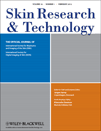Ability to estimate relative percutaneous penetration via a surrogate maker – trans epidermal water loss?
Abstract
Aims: This study measures the dynamic change of the trans-epidermal water loss (TEWL) rate and in vitro skin permeation data of tritiated water and [14C]-clonidine HCl in order to refine our knowledge in the relationship between percutaneous penetration and TEWL.
Measures: TEWL values were measured before and during the experimental period. Single application of tritiated water and [14C]-clonidine HCl were dosed at the same time on dermatomed human skin samples collected from 12 donors in a flow through diffusion cell system. Radioactivity of absorbed dose: stratum corneum, epidermis, dermis, receptor fluid collected every 4 hours, as well as removable dose residue was counted to determine accountability, percent dose, μg equivalent, and flux rate. These data were further combined with TEWL values to analyze their possible relationship.
Results: Results showed that baseline TEWL values correlated with the thickness of dermatomed skin (r=−0.44, P=0.007), and with tritiated water fluxes (r=0.34, P=0.04) and [14C]-clonidine HCl (r=0.36; P=0.03). The fluxes of tritiated water and [14C]-clonidine HCl were correlated (r=0.67, P<0.001). When TEWL and permeation data were compared, the pattern of tritiated water expressed as a percent dose permeated in receptor fluid resembled the TEWL pattern.
Conclusion: The methodology described provides evidences of the correlation of TEWL and skin integrity and skin permeation and further demonstrates to be a rapid alternative to tritiated water permeation for measuring skin barrier functions in vitro. To develop TEWL measurement as a possible predictive model to assess in vitro percutaneous absorption, however more chemicals with various physical-chemical properties need to be examined, and the relationships to TEWL and tritiated water flux better defined.




